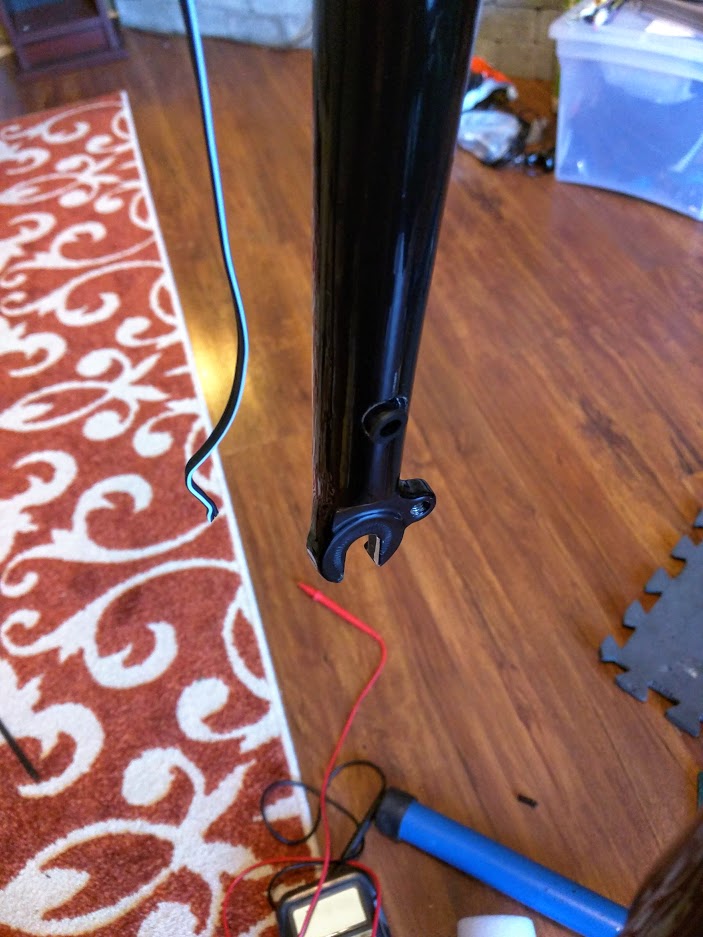Aquakitty
100 W
- Joined
- Jun 10, 2017
- Messages
- 179
Hello,
I was curious about the effect of holes in an aluminum fork on the strength of it. "Aquakitty, why the hell do you have holes in your aluminum fork" you might be thinking? Well I bought a bike that had a dynamo front hub and the holes are for internal cable routing. I enlarged the hole a little for a front hub motor, but then I thought I'd ask if this would affect it much. For the record, I will be using 2x Grin torque arms of the style that attaches to fender mounts. The fit is excellent.
As I understand it, the torque forces are on the dropouts, and the danger is in spreading the dropouts, not in the fork itself. The fork is reinforced at the bottom (I can see this through my fork hole, :lol: ).
My question is where are forces applied to the fork? I don't think I have to worry about enlarging this hole that was already there, but I thought I would like to see what maybe some engineering types think.
Edit: Here is a pic. The rubber inside is the original grommet for size comparison.

I was curious about the effect of holes in an aluminum fork on the strength of it. "Aquakitty, why the hell do you have holes in your aluminum fork" you might be thinking? Well I bought a bike that had a dynamo front hub and the holes are for internal cable routing. I enlarged the hole a little for a front hub motor, but then I thought I'd ask if this would affect it much. For the record, I will be using 2x Grin torque arms of the style that attaches to fender mounts. The fit is excellent.
As I understand it, the torque forces are on the dropouts, and the danger is in spreading the dropouts, not in the fork itself. The fork is reinforced at the bottom (I can see this through my fork hole, :lol: ).
My question is where are forces applied to the fork? I don't think I have to worry about enlarging this hole that was already there, but I thought I would like to see what maybe some engineering types think.
Edit: Here is a pic. The rubber inside is the original grommet for size comparison.


